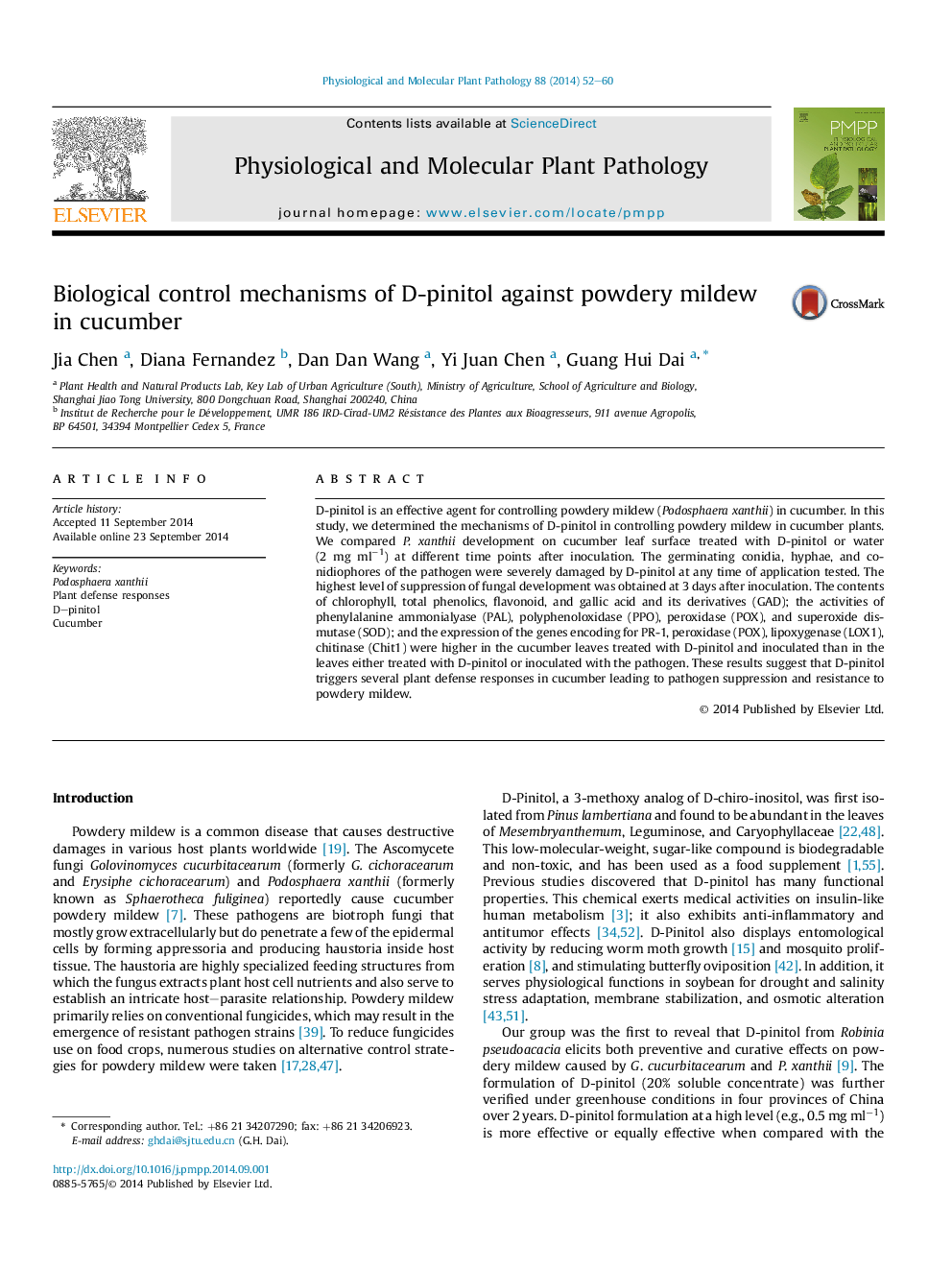| کد مقاله | کد نشریه | سال انتشار | مقاله انگلیسی | نسخه تمام متن |
|---|---|---|---|---|
| 2836302 | 1570851 | 2014 | 9 صفحه PDF | دانلود رایگان |

• The growth of powdery mildew pathogen, Podosphaera xanthii was inhibited by D-pinitol in cucumber.
• The defense-related biochemical changes by D-pinitol in P. xanthii infected cucumber was measured.
• The expression levels of defense-related genes in cucumber was monitored.
• We suggest that D-pinitol enhance the resistance of cucumber to P. xanthii.
D-pinitol is an effective agent for controlling powdery mildew (Podosphaera xanthii) in cucumber. In this study, we determined the mechanisms of D-pinitol in controlling powdery mildew in cucumber plants. We compared P. xanthii development on cucumber leaf surface treated with D-pinitol or water (2 mg ml−1) at different time points after inoculation. The germinating conidia, hyphae, and conidiophores of the pathogen were severely damaged by D-pinitol at any time of application tested. The highest level of suppression of fungal development was obtained at 3 days after inoculation. The contents of chlorophyll, total phenolics, flavonoid, and gallic acid and its derivatives (GAD); the activities of phenylalanine ammonialyase (PAL), polyphenoloxidase (PPO), peroxidase (POX), and superoxide dismutase (SOD); and the expression of the genes encoding for PR-1, peroxidase (POX), lipoxygenase (LOX1), chitinase (Chit1) were higher in the cucumber leaves treated with D-pinitol and inoculated than in the leaves either treated with D-pinitol or inoculated with the pathogen. These results suggest that D-pinitol triggers several plant defense responses in cucumber leading to pathogen suppression and resistance to powdery mildew.
Journal: Physiological and Molecular Plant Pathology - Volume 88, October 2014, Pages 52–60